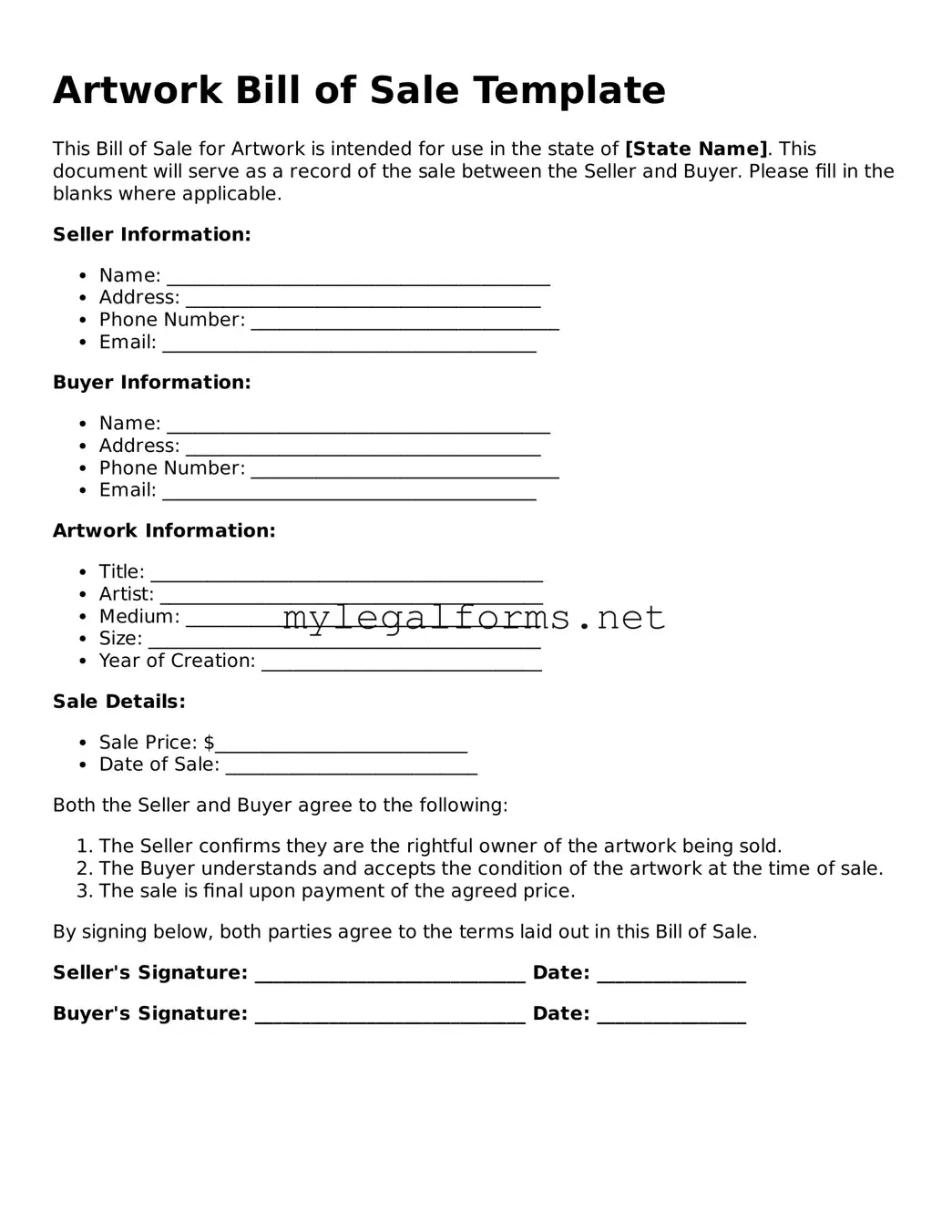Artwork Bill of Sale Template
This Bill of Sale for Artwork is intended for use in the state of [State Name]. This document will serve as a record of the sale between the Seller and Buyer. Please fill in the blanks where applicable.
Seller Information:
- Name: _________________________________________
- Address: ______________________________________
- Phone Number: _________________________________
- Email: ________________________________________
Buyer Information:
- Name: _________________________________________
- Address: ______________________________________
- Phone Number: _________________________________
- Email: ________________________________________
Artwork Information:
- Title: __________________________________________
- Artist: _________________________________________
- Medium: ______________________________________
- Size: __________________________________________
- Year of Creation: ______________________________
Sale Details:
- Sale Price: $___________________________
- Date of Sale: ___________________________
Both the Seller and Buyer agree to the following:
- The Seller confirms they are the rightful owner of the artwork being sold.
- The Buyer understands and accepts the condition of the artwork at the time of sale.
- The sale is final upon payment of the agreed price.
By signing below, both parties agree to the terms laid out in this Bill of Sale.
Seller's Signature: _____________________________ Date: ________________
Buyer's Signature: _____________________________ Date: ________________
